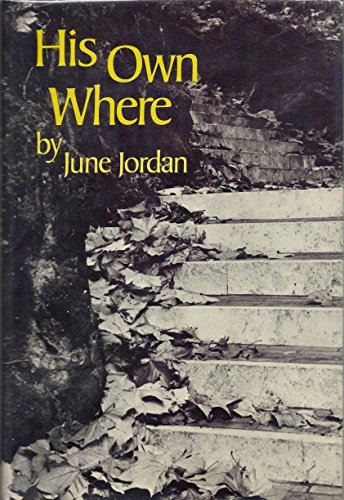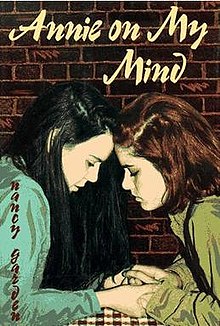What Makes a YA Book “The Best Of All Time?”
“What Makes a YA Book ‘The Best Of All Time?'” was originally published in our YA newsletter, What’s Up In YA. Sign up for it here to get YA news, reviews, deals, and more!
I’ve been thinking a lot about the TIME 100 Best YA Books of All Time list, which works to both update their previously messy list, while also noting the ways YA has changed dramatically since 2016. The list, created in collaboration with YA authors Kacen Callender, Jenny Han, Adam Silvera, Elizabeth Acevedo, Jason Reynolds, Angie Thomas, and Nicola Yoon, was developed by three TIME staffers, along with a number of the publication’s team members.
It is, without question, a much better list than the previous one. Part of that is not allowing it to be a free for all nomination system, and part of it is that the team of YA authors included in this project better represent YA books and the diversity of readers.
But the list is still flawed and raises more questions than it answers.
In their methodology, the creators explain that this list is geared heavily toward very recent titles. The growth of diverse voices is the primary factor, which is why more than half the list is from the last decade. 2017 is particularly represented.
The creators also express the amorphous nature of the label “young adult,” permitting the list to include adult titles that teens have classically picked up in schools, as well as a not-insignificant number of middle grade titles. For anyone who has spent time with YA, the amorphous nature cited by TIME from Michael Cart is less about permitting any book with an adolescent protagonist to be given the label. It’s instead meant to explain why many books with adolescent themes are not YA books. YA is something wholly itself, something understood best by those with a broad scope of knowledge about the category. That scope means a wide one, stretching back to when YA became a category in and of itself. When teens were seen as a separate designation of human development (and capital).
Though the authors who took part in this collaboration are indeed writing some of the most powerful and moving work in YA, it’s worth pausing to consider that all of them are writing in the same period of time: right now. They were not authors in the 2000s, the 1990s, the 1980s, and so forth; certainly they are more representative of today’s world, but that’s the point precisely. They represent today’s world.
And the three TIME staffers who spearheaded the project? They’re mid- to late- 20s and early 30s.
There’s a notable lack of nonfiction on this list, which exemplifies a regular problem in discussing YA. I come back, again and again, to a simple Tumblr post from YA author Malinda Lo in 2015 (Lo’s work not on TIME’s list). Nonfiction for teens has represented the world in tremendous ways, even when fiction lagged behind. So a “best of all time” list including only 7 nonfiction titles — two of which are part of the same graphic memoir series, and one of which is arguably middle grade — does disservice to the entire category of YA, as well as disservice to the talent who have been writing knockout books, and to readers who don’t get exposed to these titles.
Ninety-two percent of the list being fiction, one would expect to see some evergreen titles here. Indeed, Catcher in the Rye lands on the list, as does To Kill a Mockingbird. Neither are YA books.
Ninety-two percent of the list being fiction, one would expect to see some evergreen titles here. Indeed, Catcher in the Rye lands on the list, as does To Kill a Mockingbird. Neither are YA books.
Missing is Annie on My Mind, one of the most influential books of the 20th century. It’s a classic of queer YA literature, and it has never been out of print since its debut in 1982. But it’s not on the list.
Missing is The Outsiders, a book many consider the first “real” YA book and the start of the entire category. It is indeed a complicated book and author, especially in today’s world — SE Hinton has pushed back many times, alienating readers who see queer subtext in the story — but the TIME list notes in their methodology books they did include have been damaging and yet “for as long as they will be passed along to young readers, it will remain essential to recognize where they fail as well as where they succeed.”
Hinton’s book was published in 1967.
Other obvious exclusions from the “best of” list include YA titles like The Pigman by Paul Zindel, Finding My Voice by Marie Myung-Ok Lee (the first YA book by an Asian American author with an Asian American lead), anything by Robert Cormier (how do you leave The Chocolate War off a “best of all time” list?), anything by Norma Klein, Paula Danzinger, Lois Duncan, Norma Fox Mazer, or Virginia Hamilton? His Own Where by June Jordan is missing, as are books by Mitali Perkins, Cynthia Leitich Smith, Sharon G. Flake, Angela Johnson. That the how of the list paints a broad stroke of what YA literature of the 70s, 80s, and 90s looked like further marginalizes the authors who were — and still are — putting their books out there.

YA marketing has failed in highlighting diverse books from years prior to We Need Diverse Books, and it’s absolutely true that publishing has not been welcoming to BIPOC creators. But those books exist prior to today’s era, and they were forerunners, groundbreakers, and worthy of inclusion on a “best of” list. Is it fair to call a new author’s debut book among the “best of all time,” when books which hit shelves prior by beloved, classic authors of color are missing? That puts tremendous pressure on a single book, while simultaneously ignoring the groundwork laid before it.
Can you have a “best of all time” list that ignores global literature? TIME’s list fails to include works in translation, and it’s almost entirely books originally published in the United States (there are a few exceptions, including The Book Thief, which wasn’t even published as YA in its home country).
Building a best of all time list is a tremendous task, and we saw how it failed in 2015. TIME’s new list attempts to make amends for it, but in the process, it raises far more questions than anything. Is it even possible to really create a “best of all time” list, when that list is outdated the moment it’s published? How do we know a book published in 2021 is among “the best of all time?” It hasn’t had time to make an impact.
Can it be a “best of all time” when there are not critics or academics or librarians who study this category of literature to provide their input? Today’s authors have a finger on the pulse, but their scope of knowledge would only be enhanced by those who’ve dedicated their lives to studying the entire scope of the category.
This is a good list, but it’s not the “best of all time.” It’s extremely limited in what it offers, doesn’t meet its own criteria, and only represents a fraction of the YA category.
No list can truly be a “best of all time.”
Perhaps it’s time to stop trying to create something unique and instead, celebrate a category as a whole, with its challenges, its flaws, its triumphs, and its standouts. It’s been long past time to talk about outstanding backlist titles by marginalized writers on a platform of TIME’s scale, and a platform like that would do wonders for the bounty of YA nonfiction. It’s time to dig into why some books are classics, why some are consistently called YA when they’re not, and why it’s important, as TIME itself said, “to recognize where [YA classics] fail as well as where they succeed.”
Let’s appreciate YA for what it is: expansive, creative, groundbreaking, and life-changing.
YA doesn’t always need to be culled into a best of all time to give it validity.


إرسال تعليق
0 تعليقات